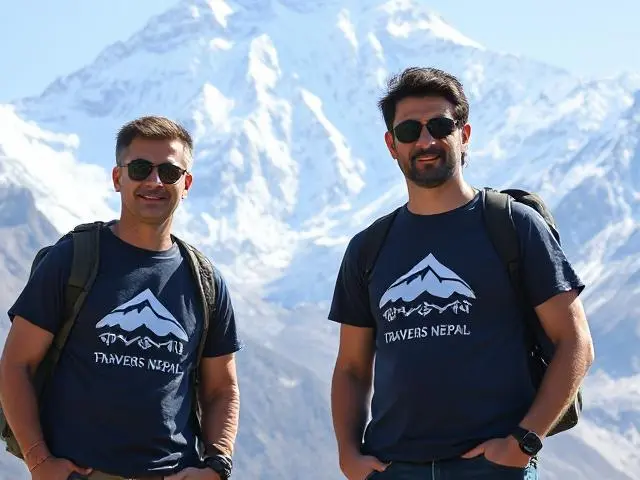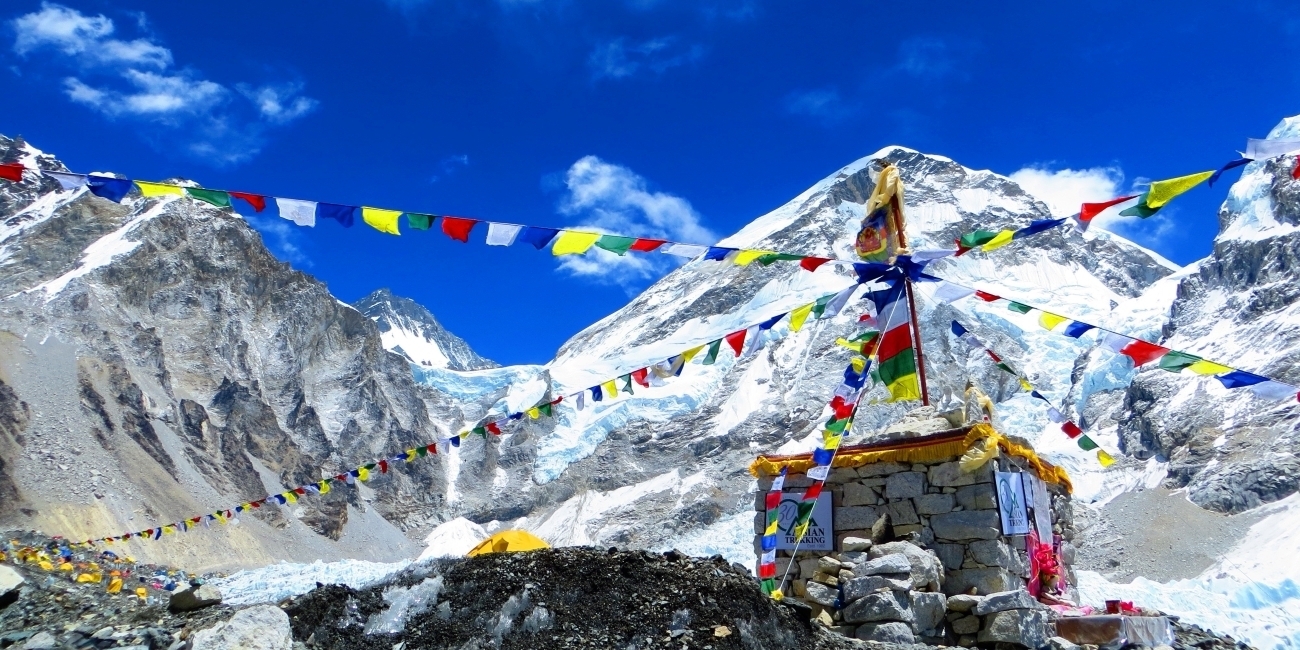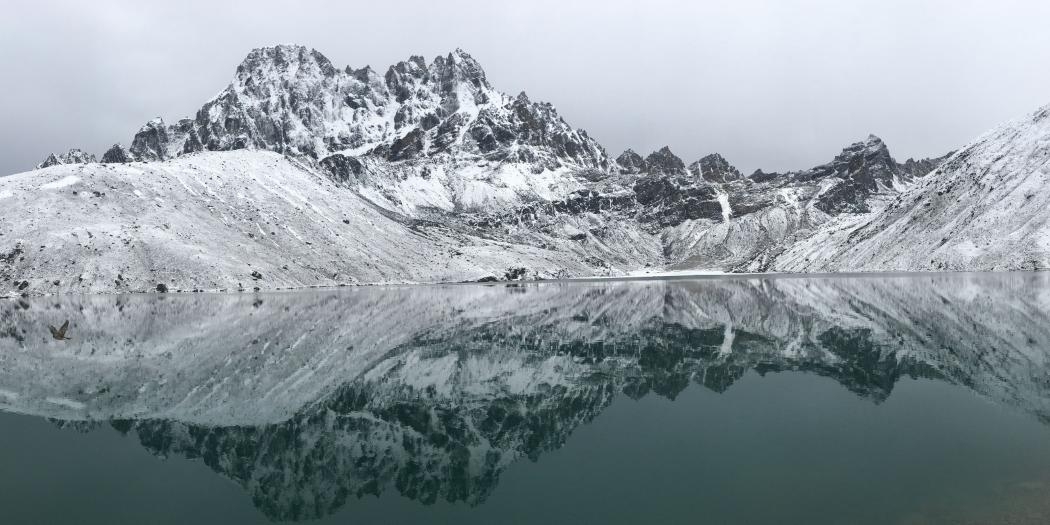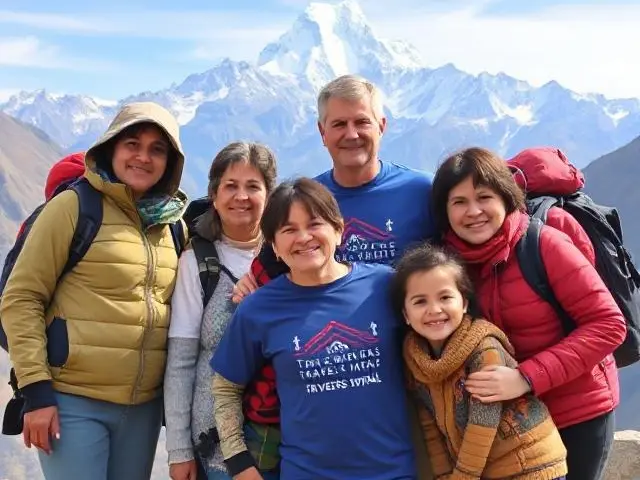The name itself evokes a sense of mythical grandeur:Mount Everest. Known as Sagarmatha (Goddess of the Sky) in Nepal and Chomolungma (Mother Goddess of the World) in Tibet, it is the ultimate symbol of Earth's raw, untamable beauty. For many, merely seeing a photograph is inspiring. But for a special breed of dreamers, the call is louder. It’s a call to journey to its very foot, to stand in the shadow of giants, and to trace the footsteps of legends. This is the call of the Everest Base Camp Trek.
More than just a hike, the trek to Everest Base Camp (EBC) is a pilgrimage. It is a profound physical challenge, a cultural immersion into the heart of the Sherpa people, and a transformative journey that will test your limits and reward you with some of the most staggering landscapes on the planet. This isn't a vacation; it's an expedition.
This guide is your definitive resource. We will go far beyond a simple itinerary. We will delve into the history, prepare you mentally and physically, break down the real costs, teach you how to acclimatize, and provide you with the knowledge to undertake this adventure of a lifetime safely and successfully.
Why Trek to Everest Base Camp? The Allure of the Himalayas
Before we dive into the logistics, it's important to understand the why. What drives over 40,000 people each year to undertake this demanding journey?
- The Ultimate Bragging Right: Let's be honest, it's there. To say you've trekked to the base of the world's highest mountain is a lifetime achievement.
- A Physical and Mental Crucible: The trek pushes you beyond your perceived limits. The combination of long days, steep ascents, thin air, and basic amenities forges resilience and mental fortitude that will stay with you long after you descend.
- Unparalleled Scenery: From lush, rhododendron-filled forests and raging glacial rivers to the stark, majestic beauty of the high Himalayas, the visual spectacle is relentless. You will witness iconic peaks likeAma Dablam, Lhotse, Nuptse, and of course, Everest itself in a way no photograph can ever do justice.
- Sherpa Culture and Buddhist Spirit: The trail is lined with ancient monasteries, intricately carved mani stones, and prayer flags fluttering in the wind. You will interact with the Sherpa people, whose incredible strength, warmth, and deep-rooted Buddhist faith are as inspiring as the mountains themselves.
- Disconnect to Reconnect: With limited electricity and Wi-Fi, the trek forces a digital detox. You are present in the moment, connected to the raw environment, your fellow trekkers, and your own thoughts.
The Heart of the Journey: A Detailed Day-by-Day Itinerary
The classic Everest Base Camp Trek is a 12-day journey on the ground, typically packaged as a 14-16 day trip from Kathmandu, including buffer days and travel. This itinerary follows the most popular route, which includes the acclimatization-friendly detour to Namche Bazaar and the climb to Kala Patthar for the best views.
Pre-Trek: Kathmandu (1,400m / 4,593ft)
Your adventure begins in the chaotic, vibrant capital of Nepal. Use this day to do three crucial things:
1. Get your TIMS Card and Sagarmatha National Park Permit: Your trekking agency will usually handle this, but if you're going independently, this is your top priority.
2. Final Gear Check: Thamel, Kathmandu's tourist hub, is filled with gear shops. You can rent or buy anything you forgot, from down jackets to duffel bags. Be wary of counterfeit branded gear, however.
3. Briefing: Meet your guide and team for a final overview of the trek.
Day 1: Kathmandu to Lukla (2,840m / 9,318ft) & Trek to Phakding (2,610m / 8,563ft)
- Flight: The adventure begins with a white-knuckle, 35-minute flight from Kathmandu to Tenzing-Hillary Airport in Lukla, often cited as the world's most dangerous airport due to its short, sloping runway carved into the mountainside. The views of the Himalayas are a breathtaking preview.
- Trek (3-4 hours, ~8km, descent): After meeting your porters, you begin walking! The first day is a gentle descent along the Dudh Koshi River, passing through pine forests and small villages like Chheplung and Ghat. It's a warm-up for the days ahead. You'll cross several suspension bridges adorned with prayer flags—a iconic feature of the trek.
- Accommodation: Teahouse in Phakding.
- Weather: Keep windcheater Jacket and Buff in your day backpack.
Day 2: Phakding to Namche Bazaar (3,440m / 11,286ft)
- Trek (5-7 hours, ~10km, significant ascent):This is your first real test. The trail winds through the forests of Jorsale and enters the Sagarmatha National Park(a UNESCO World Heritage Site). The day culminates in the grueling two-hour climb from the riverbed up to Namche Bazaar. The reward? If the weather is clear, you'll get your first glimpse ofMount Everest peeking over the ridge of Lhotse-Nuptse.
- Accommodation: Teahouse in Namche Bazaar, the bustling Sherpa capital and the last major town on the trail.
- Weather: You must Keep windcheater Jacket, Binny and Buff in your day backpack.
Day 3: Acclimatization Day in Namche Bazaar
- Climb High, Sleep Low":This is the golden rule of acclimatization. You must spend the day actively hiking to a higher altitude before returning to sleep in Namche.
- Recommended Hike:The steep climb to the Everest View Hotel(3,880m) is perfect. It's one of the highest luxury hotels in the world and offers a stunning panoramic view of Everest, Lhotse, and Ama Dablam. You can also visit the Sherpa Culture Museum to learn about the local heritage.
- Explore: Use the afternoon to explore Namche's bakeries, gear shops, and the weekly Saturday market.
- Weather: You must Keep windcheater Jacket/light down jacket, Binny, gulf and Buff in your day backpack.
Day 4: Namche Bazaar to Tengboche (3,860m / 12,664ft)
- Trek (5-6 hours, ~10km, mixed): This is arguably the most visually stunning day of the trek. The trail contours around the mountain with breathtaking, wide-open views of the Himalayan giants. You'll descend to the river at Phunki Tenga for lunch before making the steep, forested climb up to Tengboche.
- Highlight: Visit the Tengboche Monastery, the largest and most important monastery in the Khumbu region. The setting, with Ama Dablam as a perfect backdrop, is spiritually uplifting.
- Weather: You must Keep windcheater Jacket/light down jacket, Binny, gulf, raincoat and Buff in your day backpack.
Day 5: Tengboche to Dingboche (4,410m / 14,468ft)
- Trek (5-6 hours, ~11km, gradual ascent): The landscape begins to change from forest to arid, alpine scrub. You'll descend through rhododendron forests to Deboche, cross the Imja River, and climb up to the picturesque village of Pangboche. The views of Ama Dablam are incredible from here, its majestic face seeming to change with every turn. The final stretch is a gradual climb into the Imja Valley towards Dingboche, a summer settlement surrounded by stone-walled fields.
- Accommodation: Teahouse in Dingboche.
- Weather: You must Keep windcheater JacketDown jacket, Binny, gulf, raincoat and Buff in your day backpack.
Day 6: Second Acclimatization Day in Dingboche
- Another crucial day for acclimatization: A popular hike is toNangkartshang Peak (5,083m), a steep climb behind the village that offers phenomenal 360-degree views of Makalu, Lhotse, Cho Oyu, and Ama Dablam. Even a partial climb is hugely beneficial.
- Rest: The afternoon is for resting, hydrating, reading, and playing cards with fellow trekkers.
- Weather: You must Keep windcheater Jacket/Down jacket, Binny, gulf, raincoat and Buff in your day backpack.
Day 7: Dingboche to Lobuche (4,910m / 16,109ft)
- Trek (5-6 hours, ~11km, steady ascent): The air is noticeably thinner now. The trail climbs gradually along the lateral moraine of the Khumbu Glacier. A sobering highlight is the site of theMemorial Chortens, dedicated to climbers who have perished on Everest, including the legendary Scott Fischer and Rob Hall. It's a poignant reminder of the mountain's power. The final hour is a tough climb up to the small, windswept settlement of Lobuche.
- Accommodation: Teahouse in Lobuche. Nights are very cold here.
- Weather: You must Keep windcheater Jacket/Down jacket, Binny, gulf, raincoat and Buff in your day backpack.
Day 8: Lobuche to Gorak Shep (5,140m / 16,864ft) & Everest Base Camp (5,364m / 17,598ft)
- Trek to Gorak Shep (2-3 hours):The trail is rocky and follows the Khumbu Glacier. You'll reach Gorak Shep, a frozen lakebed and the last settlement on the trail, for lunch.
- Trek to Everest Base Camp (3-4 hours round trip): After lunch, you embark on the final push. The path weaves through the chaotic icefall of the Khumbu Glacier. It's a surreal, Martian landscape. Reaching Base Camp is an emotional crescendo. You won't see the summit of Everest from here (it's hidden by the massive bulk of Nuptse), but the sense of achievement is immense. You are standing at the foot of the world's highest mountain, surrounded by the ice seracs of the glacier and the brightly colored tents of expeditions (in the spring season). Soak it in.
- Trek back to Gorak Shep: You'll spend a cold, oxygen-deprived night at the highest altitude of your trek.
- Accommodation: Teahouse in Gorak Shep.
- Weather: You must Keep-wear windcheater Jacket/Down jacket, Binny, gulf, raincoat and Buff in your day backpack.
Day 9: Kala Patthar (5,645m / 18,519ft) & Descent to Pheriche (4,240m / 13,911ft)
- Kala Patthar Summit (2-3 hours up): This is the visual highlight of the entire trek. You wake up around 4-5 am and make a dark, cold, and grueling climb to the summit of Kala Patthar ("Black Rock"). The effort is rewarded with the most spectacular sunrise you will ever witness. The first light hits the summit of Mount Everest, illuminating it in golden hues. You have an unobstructed, 360-degree panoramic view of the entire Khumbu glacier, Nuptse, Pumori, and countless other peaks. It is a moment you will remember forever.
- Descent (6-7 hours total): After descending to Gorak Shep for breakfast, you begin the long but rewarding journey down. The descent feels surprisingly easy as the oxygen floods back into your body. You'll retrace your steps to Lobuche and then take a different route down to the quieter village of Pheriche.
- Accommodation:Teahouse in Pheriche.
- Weather: You must wear Down jacket, Binny, gulf, keep raincoat and Buff in your day backpack.
Days 10-12: The Return Journey (Pheriche to Namche, Namche to Lukla)
The descent is much faster. You'll cover in two days what took nearly a week to climb. Enjoy the changing landscapes, the warmer air, and the feeling of accomplishment. Celebrate with your team in Namche and Lukla with a well-deserved beer and a hot shower.
Day 13: Fly from Lukla to Kathmandu
Weather permitting, you catch your early morning flight back to the chaos of Kathmandu, a world away from the serene heights of the Himalayas.
Breaking Down the Real Cost of the Everest Base Camp Trek
The cost can vary wildly based on your style of travel. Here’s a realistic breakdown for 2025/26.
Option 1: All-Inclusive Guided Tour (~$1,400 - $2,500+)
This is the most popular and recommended option for most trekkers. The price includes:
- Kathmandu-Lukla-Kathmandu flights.
- All permits (TIMS and National Park Entry).
- Experienced, government-licensed guide and porters(including their insurance, salary, food, and accommodation).
- Teahouse accommodation during the trek (usually twin-sharing).
- All meals(breakfast, lunch, dinner) during the trek.
- Guide will carry a comprehensive first-aid kit and oximeter.
Why this is best:Safety, convenience, and support. Your guide handles logistics, checks your oxygen levels, ensures proper acclimatization, and provides invaluable cultural context.
Option 2: Independent Trekking (~$1,000 - $1,500)
For the highly experienced, self-sufficient trekker.
- Flights: $350 round trip.
- Permits: $50.
- Food/Lodging: $30-$50 per day x 12 days = $360-$600.
- Porter Rental (optional):$25-$30 per day.
- Miscellaneous (snacks, wifi, charging, showers): $200.
Risks: You are solely responsible for navigation, acclimatization, and safety. Not recommended for first-timers in the Himalayas.
Option 3: Luxury Trekking ($3,000 - $5,000+)
For those who want comfort. Includes stays in the best available lodges (some with attached bathrooms and heating), better food options, and sometimes even supplemental oxygen.
Additional Costs to Consider:
- International Flights: To/from Kathmandu.
- Kathmandu Accommodation: $20-$50/night.
- Meals in Kathmandu:$15-$25/day.
- Travel Insurance (ABSOLUTELY ESSENTIAL):Must cover emergency helicopter evacuation up to 6,000m. ~$150-$200.
- Tips for Guide/Porters: A standard tip is 10-15% of the total tour cost, split between the team. Guide: ~$15-$20/day, Porter: ~$10-$15/day.
- Gear Rental/Purchase:Can be a significant upfront cost if you don't own anything.
Confronting the Challenge: Altitude Sickness and How to Beat It
- Acute Mountain Sickness (AMS) is the single biggest risk on the EBC trek. It is caused by ascending too quickly, not giving your body time to acclimatize to the reduced oxygen levels. It is unpredictable and can affect anyone, regardless of age or fitness.
- Symptoms (Learn them!):
- Mild: Headache, dizziness, fatigue, loss of appetite, nausea, disturbed sleep.
- Severe (HAPE/HACE):Severe headache not relieved by medication, vomiting, loss of coordination (ataxia), confusion, irrational behavior, shortness of breath at rest, coughing up fluid. Severe AMS is a life-threatening medical emergency.
The Golden Rules of Prevention:
1. Go Slow: The itinerary above is designed with acclimatization in mind. Do not try to rush it.
2. Hydrate Relentlessly: Drink 3-4 liters of water per day. Your urine should be clear or light yellow.
3. "Climb High, Sleep Low": The acclimatization hikes are not optional. They are a critical part of the process.
4. Listen to Your Body:A minor headache is common. If symptoms worsen, DO NOT ASCEND.This is the most important rule.
5. Consider Medication: Many trekkers use Diamox (Acetazolamide)as a prophylactic. It helps speed up acclimatization. Consult your doctor before your trip.
6. Avoid Alcohol and Sedatives:They depress your breathing and worsen AMS.
What to Do If You Get Sick:
- Inform your guide immediately.They are trained to recognize symptoms.
- If symptoms are mild: Stop, rest, and hydrate. Do not go higher until symptoms subside.
- If symptoms are severe: DESCEND IMMEDIATELY. This is the only cure. Delaying descent for even a few hours can be fatal. This is where your travel insurance and a reliable guide are worth their weight in gold.
Training and Fitness: Preparing Your Body for the Challenge
You don't need to be an elite athlete, but you must be in very good physical condition.
- Cardiovascular Endurance (Most Important):Focus on activities that build stamina.
- Running, Cycling, Swimming: 3-4 times per week, 45-60 minutes per session.
- Stair Climbing: The best simulation. Find a tall building or a stadium and climb up and down with a weighted backpack. This is golden.
- HIIT Workouts: To build lung capacity and recovery speed.
- Leg Strength: Your quads and calves will be tested on the descents.
- Squats, Lunges, Calf Raises.
- Core Strength:A strong core helps with balance and carrying a pack.
- Practice Hiking: If you can, go on weekend hikes of 5-6 hours with a loaded backpack (10-15 kg) on hilly terrain. There is no substitute for this.
Start training at least 3-4 months before your trek.
The Essential Everest Base Camp Packing List
The key to packing for Everest is layering. Temperatures can swing from sunny and warm to freezing and windy in minutes.
Clothing:
- Base Layers (2 sets):Merino wool or synthetic thermal tops and bottoms.
- Mid Layers: Fleece jacket or pullover, lightweight down/synthetic vest.
- Trekking Shirts/Pants: Quick-dry, breathable fabrics. Zip-off pants are versatile.
- Outer Layers:
- Insulating Jacket: A high-quality, warm down or synthetic jacket for camp and cold mornings.
- Waterproof/Windproof Shell Jacket and Pants: Non-negotiable. Protects from rain and biting wind.
- Headwear: Warm beanie, sun hat or cap, buff/neck gaiter.
- Handwear: Lightweight liner gloves and insulated waterproof gloves.
- Footwear:
- Well-Broken-In Hiking Boots: waterproof and with ankle support. This is your most important item.
- Camp Shoes: Lightweight sneakers or sandals for teahouses.
- Socks:Several pairs of merino wool or synthetic hiking socks.
Gear:
- Backpack: A 40-50 liter pack for yourself. A larger duffel (provided by agency) will be carried by a porter.
- Trekking Poles: A lifesaver for knees on descents and stability on rocky trails.
- Sleeping Bag:Rated to at least -15°C / 0°F. You can rent these in Kathmandu.
- Headlamp: With extra batteries.
- Sunglasses: UV protection is critical at high altitude.
- Water Purification: Reusable bottles (Nalgene) and purification tablets or a Steripen/Filter to avoid buying plastic bottles.
- Personal First Aid Kit: Include blister plasters (Compeed), ibuprofen, diamox (if using), and personal medications.
Extras:
- Power Bank: Electricity for charging becomes expensive the higher you go.
- Snacks: Nuts, energy bars, chocolate from home for a morale boost.
- Book, Cards, Journal.
- Wet Wipes & Hand Sanitizer: For "showers" between teahouses.
- Ear Plugs & Eye Mask: Essential for sleeping in noisy teahouses.
Beyond the Classic Trail: Alternative Everest Treks
If you have more time or want a less-traveled path, consider these incredible alternatives:
Gokyo Lakes Trek: Branches off from Namche and visits a series of stunning turquoise lakes. The climb of Gokyo Ri (5,357m) rivals Kala Patthar for views and is often less crowded.
Three Passes Trek:The ultimate high-altitude challenge for experienced trekkers. It connects the EBC, Gokyo, and Cho La valleys by crossing three high passes over 5,300m. It takes 18-21 days and is brutally difficult but incredibly rewarding.
Everest Base Camp with Island Peak: For those with mountaineering ambitions, you can add a guided ascent of Island Peak (6,189m), a "trekking peak" that requires basic ice axe and crampon skills.
Conclusion: Answering the Call
TheEverest Base Camp Trek is more than a item to check off a bucket list. It is a journey that will humble you, exhaust you, and ultimately, transform you. It's about the camaraderie forged over a shared pot of ginger tea, the silent awe of a Himalayan sunrise, the resilience you discover within yourself, and the profound respect you gain for the mountains and the people who call them home.
The path is tough, the air is thin, and the comforts are few. But the rewards are immeasurable. With careful planning, realistic training, and a mindset of respect for the mountain, you can stand at the base of the world and know you earned the view.
The Himalayas are calling. It's time to answer.







